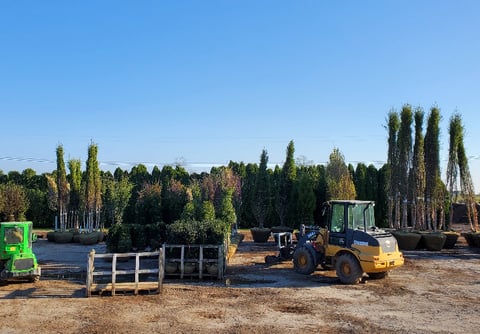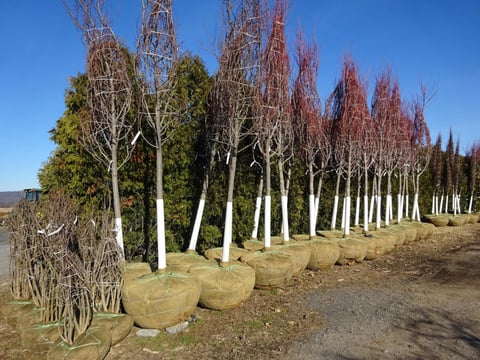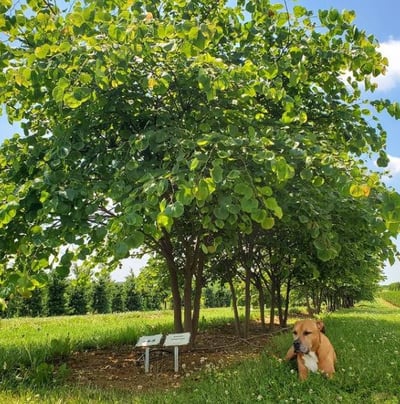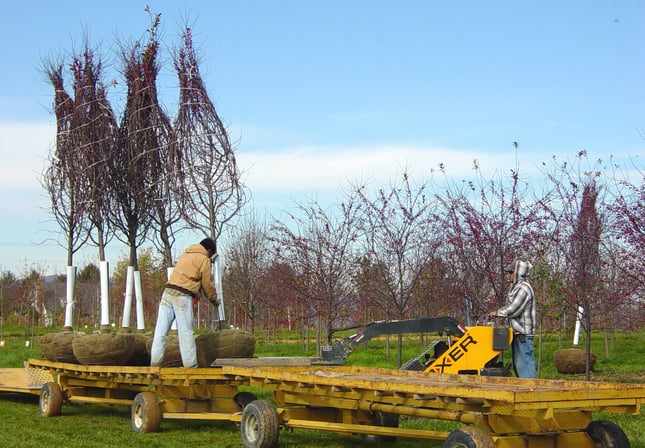Make Sure Your Fixed Budget Planting Plan Is Based on Accurate Pricing
Our job has been booked and the planting plan is set. We have to make it work with the budget we have. Can you help us?
Whoops! “Winging it” may sometimes be necessary in response to a crisis, but it is never a good overall strategy. This is especially true when it comes to budgeting for and presenting planting plans. You have to be tuned into up-to-date, accurate plant pricing. You want to be clear on what plant prices and other costs will be before you present a fixed budget proposal to your clients. I know. Easier said than done! But with forethought and planning, you can guard your profit margin and, most importantly, deliver what you’ve promised to the client.
We are frequently tasked with helping a customer of ours who has presented a proposal and has the job, but now has to deal with rising prices or supply chain issues as the time for shovels in the ground comes near. We can help you work within the budget after the fact, but it’s better for everyone if some contingencies are factored in ahead of time.
The question is, How do you account for price fluctuations and availability issues when you are bidding for jobs months ahead of time?
Managing Price and Scarcity on a Fixed Budget
Right now, prices for plant material and other items landscapers and nurseries use every day are going up. Here’s what sounds like an extreme example, but it’s what is happening. A friend called recently. They normally spend about $75,000 a year on wire baskets. The supplier told them there would be a 62% increase this year. Wow! I happened to know of a supplier who hadn’t yet raised their prices–so crisis averted. But this is the reality people are facing.

Why the scarcity of plant material? Growers in 2020 were selling inventory from 2021 and 2022 stock. Many thought it was going to be a rough few years – which in many ways it was – but selling was not one of those problems. Now some are facing the results of meeting the unexpected demand by selling one year's stock and dipping into the next–essentially selling their future. So now they have lower supplies than they had planned on. Things will level out, but these are the kinds of challenges landscapers and nurseries both are facing as they seek the products they need for projects already in the pipeline.
I have some suggestions for when you are faced with the twin challenges of a fixed budget proposal plus scarcity:
- Look for plants that are smaller sized.
- Ask your growers about similar plants as an alternative to those specified
- Make a slight adjustment to use fewer plants.
The immediate goal is to get out of the current pickle, and then learn from that in pricing upcoming projects so you don’t repeat the error.
Know Your Grower and Use Them as a Resource
 To avoid plans going over budget, develop a strong relationship with your grower. That is essential. You’ve got to know what they are capable of and what they are not set up to do. Suppliers don’t all grow the same plant exactly alike. So for example, shrubs are generally sold by height, sometimes by spread. But a four foot high plant here might be four feet wide. Another grower might have a four foot plant that's three feet wide. Know how your grower grades because grading systems are not consistent.
To avoid plans going over budget, develop a strong relationship with your grower. That is essential. You’ve got to know what they are capable of and what they are not set up to do. Suppliers don’t all grow the same plant exactly alike. So for example, shrubs are generally sold by height, sometimes by spread. But a four foot high plant here might be four feet wide. Another grower might have a four foot plant that's three feet wide. Know how your grower grades because grading systems are not consistent.
This has always been a gripe of mine, that the grading system in our industry is all over the place. You could go to 100 different nurseries looking for a four foot tall Viburnum Shasta and there's going to be that much variability in what their finished plant looks like. So really knowing beforehand what to expect could help you better plan exactly how many plants you’ll need to fill an area.
When you know your grower, you’ll know what you need for the job. This scenario happens at Waverly Farm more than you might think: a client thought they needed 32 of a given plant, of a given size. They get here on site and say, "Wow, your plants are much broader, fuller, and happier. I can do this with 25 plants now. And I'll spend more for your 25 on an individual basis, but it still fits my budget because I don't have to buy as many." We all have different ways of doing things, and it’s going to result in variations in the end product.
 Yes, we all know that pricing and “promised” availability is a moving target. But there’s no substitute for due diligence. Keep in touch with your growers and use them as resources. Understanding what you can expect from them will help you avoid putting a big dent in your profit after you’ve agreed on a budget for a project. Prices now may not be the same in six months. Growers may need to raise prices for plants due to supply chain increases on the materials and labor costs. That will go into the final price point of the individual plant. Or availability may change drastically.
Yes, we all know that pricing and “promised” availability is a moving target. But there’s no substitute for due diligence. Keep in touch with your growers and use them as resources. Understanding what you can expect from them will help you avoid putting a big dent in your profit after you’ve agreed on a budget for a project. Prices now may not be the same in six months. Growers may need to raise prices for plants due to supply chain increases on the materials and labor costs. That will go into the final price point of the individual plant. Or availability may change drastically.
The good news? You don’t have to wing it when it comes to providing your customers with an excellent plan that minimizes the potential for last minute surprises and protects your profit margin.
We all stand to benefit from high value plant material sold at prices that honestly account for what it takes to produce that value. But how do we know we are purchasing the best plant material for the best price?
Our ebook “Why Accurate Plant Pricing is Good for Everyone” will give you a fresh perspective on the delicate balance between price and value.





